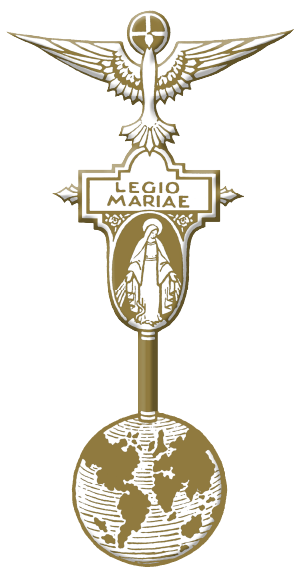Pentecost - Its Message to Legionaries
‘When the day of Pentecost had come, they were all together in one place. And suddenly from heaven, there came a sound like the rush of a violent wind and it filled the entire house where they were sitting. Divided tongues, as of fire, appeared among them, and a tongue rested on each of them. All of them were filled with the Holy Spirit and began to speak in other languages, as the Spirit gave them ability’ (Acts 2:2-4). We note in the account of Pentecost that not only the apostles but everyone in the Upper Room received the Holy Spirit.
In the description of the disciples gathered in the Upper Room, prior to the coming of the Holy Spirit, we were told several specific things - the presence of the apostles and the lay faithful with our Lady and their prayer in common: ‘All these were constantly devoting themselves to prayer, together with certain women, and Mary, the mother of Jesus, as well as his brothers’ (Acts 1:14).
In the Acts of the Apostles, most of Luke’s attention is concentrated on Peter. He mentioned him 56 times in that book. Peter is always at the centre of these scenes and episodes where he appears with other apostles or disciples. In matters to do with the Jerusalem community, he acts as spokesman of the Twelve. He plays a key role in the opening up of the Gospel to the pagans.
The college of the twelve apostles, with Peter at their head, endures in the episcopacy of the Church. Its head is the Pope, Peter’s successor and vicar of Jesus Christ. The papacy is independent of the world’s approval. However, it is interesting to notice in recent days the focus on the Pope’s unique position, transcending so many religious and political differences.
The Legion of Mary began its life without any premeditation with regard to rules and practices. Yet it is remarkable that so many of the key elements found in the account of Pentecost were present. As at Pentecost the embryo group of legionaries gathered under the maternal eyes of Mary represented by her statue, surrounded by lights and flowers. The first corporate act of the group was to kneel and invoke the Holy Spirit whom they had received from the Church at their Baptism. They prayed some mysteries of the rosary celebrating interventions of the Holy Spirit in the drama of redemption. Then under the auspices of Mary, they set themselves to consider how best to please God and make him loved in his world. For love is deeds, not sweet words. In their proceedings they were united with the pastors of the Church through the priest present with them as their Spiritual Director. The Legion’s rules, later drawn up, were the flowering of what had been in the bud. ‘Each praesidium’ say the rules, ‘shall have a priest as Spiritual Director…. No praesidium shall be established without the consent of the parish priest or of the Ordinary’.
The Acts of the Apostles say of the first community of Christians ‘they devoted themselves to the apostles’ teaching and fellowship, to the breaking of bread and the prayers’ (Acts 2:42). The true Christian norm continues to be union with their pastors, mutual charity, the celebration of the Eucharist and prayer. Evangelisation and apostolate, whether individual or collective, are expressions of charity.
The Holy Spirit accompanied the first preaching of the Gospel with signs and wonders, especially in the form of physical cures. They were especially needed at that time to get the Church off the ground. Though rarer now, they continue to be a feature of the Church’s life, as we see in the canonisation processes of contemporary saints. But spiritual wonders are all around us. Every Concilium report furnishes evidence of the Holy Spirit’s action. Blind men who had lost the ability to see the wonderful works of God, recover their sight. Lame and crippled men, bound by their passions and whose hearts had forgotten love, recover their freedom. Deaf men who did not want to know God are given back their hearing. Dumb men who did not want to acknowledge their defects begin to talk. Dead men in whom sin had destroyed life come to life again.
However, the mark of the cross, as Jesus told us, will always characterise the Church’s earthly pilgrimage. The letters of the apostles bear witness to persecutions from without and misbehaviours and disagreements within the first generation of Christians. Despite the Holy Spirit’s wonderful gifts, we still carry with us the tendency to evil. To curb this tendency we must use the means at our disposal, including close union with our Immaculate Mother Mary.
In the Tessera picture, the Dove, image of the Holy Spirit, hovers over the Legion. Its members have consecrated themselves to the Divine Person. Our Lady like a pillar of fire, all luminous and burning with the Holy Spirit advances at the head of her battalions to certain victory.

